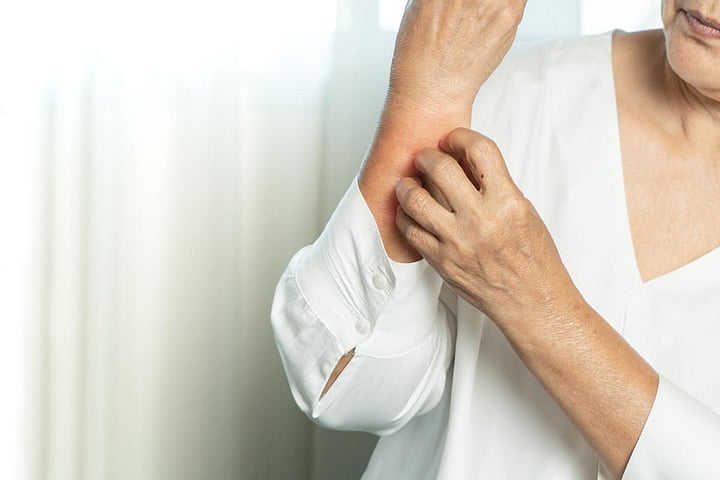高齢者のアトピー性皮膚炎、世界的に深刻な疾病負荷
世界的有病率は1990年から2021年にかけて増加、この傾向は2050年まで続くと予測
重慶医科大学附属第一医院(中国)のYi Ou氏らは、1990年から2021年までの高齢者におけるADの世界的な疾病負荷を調査し、2050年までの変化を予測した。60歳以上の人におけるADの有病率、発症率、および障害調整生存年(DALYs)の推定値は、2021年の世界疾病負荷研究(GBD 2021)より抽出した。
解析の結果、高齢者のADの世界的な有病数は1990年から2021年にかけて、1100万9,630件増加していたことが明らかになった。一方で、年齢調整罹患率は低下しており、主な要因は人口増加と考えられた。発症率は、女性と75~79歳の年齢層で高かった。発症率、有病率、DALY率は社会人口統計学的指標(SDI)と正の相関関係が認められた。その一方で、SDIに関連する格差は有意に縮小した。高齢者におけるADの発症率、有病率、DALYsは2050年まで増加すると予測されたが、年齢標準化DALY率は減少すると予測された。
著者らは、「世界的に、ADは過小評価されている公衆衛生上の懸念事項であり、主に60歳以上の人に影響を与えている。また、性別、年齢層、地域、国によってその影響にばらつきが見られる。したがって、この差し迫った課題に対処するためには、高齢者におけるADの効果的な予防と管理に的を絞った取り組みが必要である」と述べている。


Global Burden of Atopic Dermatitis in Older Adults Is Considerable
Global prevalence of older adult AD increased from 1990 to 2021 and is expected to continue increasing to 2050
WEDNESDAY, May 7, 2025 (HealthDay News) -- The global burden of atopic dermatitis (AD) in older adults is considerable and is expected to continue increasing to 2050, according to a study published online April 1 in Frontiers in Public Health.
Yi Ou, from the First Affiliated Hospital of Chongqing Medical University in China, and colleagues examined the global burden of AD in older adults from 1990 to 2021 and projected change to 2050. Estimates of prevalence, incidence, and disability-adjusted life-years (DALYs) attributable to AD among individuals aged 60 years and older were extracted from the Global Burden of Diseases Study 2021.
The researchers found that the global prevalence of AD in older adults increased from 1990 to 2021 to 11,009,630 cases, even as age-standardized rates decreased, with population growth the main driver. Incidence rates were higher among women and those aged 75 to 79 years. There were positive correlations observed for incidence, prevalence, and DALY rates with sociodemographic index (SDI) levels, while a significant decline was seen in SDI-related inequalities. Increasing incidence, prevalence, and DALY numbers for AD in older adults were anticipated up to 2050, while a decrease was expected in age-standardized DALY rates.
"Globally, AD represented an underestimated public health concern primarily affecting individuals aged 60 and older, with variations observed across genders, age groups, regions, and nations," the authors write. "Consequently, targeted strategies for the effective prevention and management of AD in the older adult are needed to address the impending challenge."


